This zesty pomegranate salad recipe with tomatoes and zaatar spice blend is a delicious oil-free salad that's easy to make in 20 minutes or less.
Zaatar (za'atar) is a traditional Middle Eastern spice blend that's easy to make. If you have a little leftover after making pomegranate salad, add it to your other salad recipes or try flavorful chickpeas and quinoa or toasted chickpea salad with tahini dressing.

This gorgeous pomegranate salad can be served during the holiday season as a quick side dish - just not the same old green salad.
Table of Contents
Why You'll Love This Recipe
- Make this salad a few hours ahead and let the flavors build.
- A beautiful salad that's at home on a holiday menu, picnic table, or any time of year.
- Lemon juice powered by zaatar makes a simple salad dressing for a crisp flavor.
- A clean-eating vegan salad recipe with simple ingredients and fresh flavors without olive oil or added fat.
Recipe Ingredients
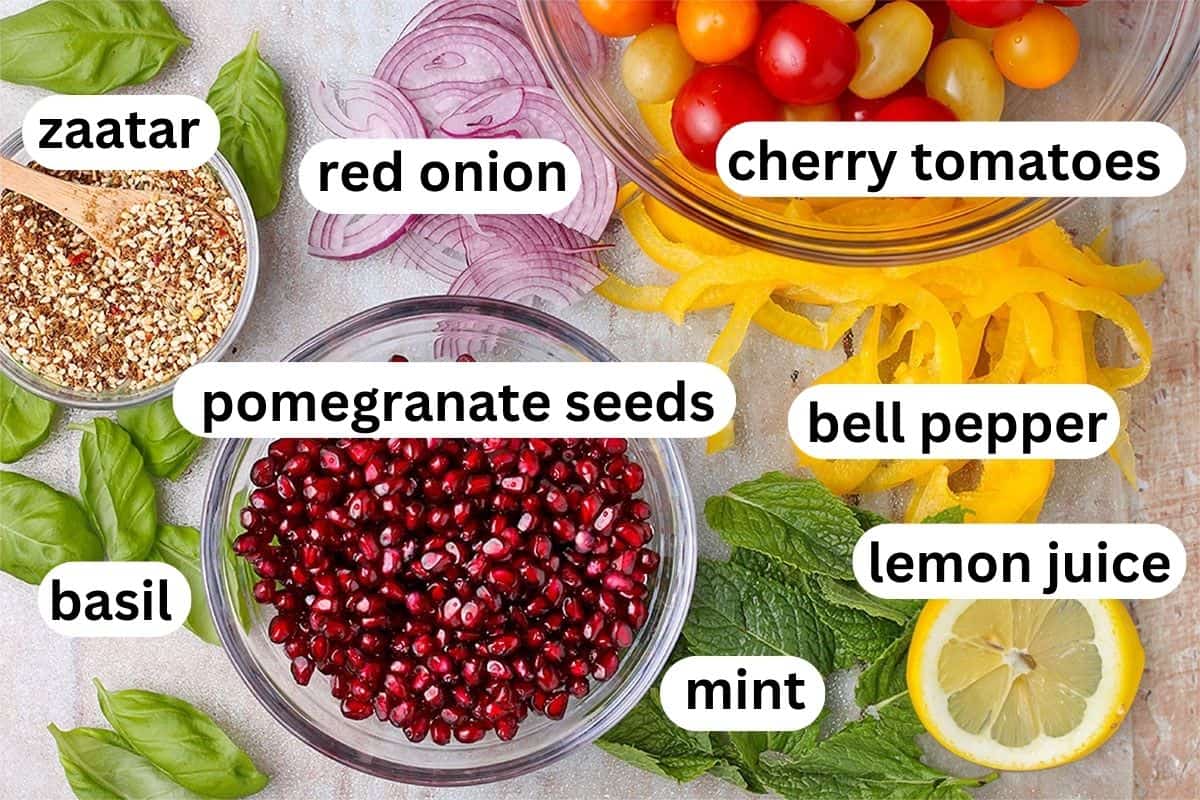
Pomegranate seeds. Tangy and crunchy pomegranate arils. Use 1 medium pomegranate, or look for fresh pomegranate seeds at your local grocery store. If you absolutely can't find pomegranate, dried cranberries are the closest substitute.
Tomatoes. Cherry tomatoes or smaller grape tomatoes are best for this recipe. I happened on a variety pack of different colors, but red tomatoes are great too.
Bell pepper. I used yellow pepper for color contrast. Substitute with red or orange pepper. Green pepper may be a bit too bitter for this salad.
Sumac. Lemony sumac is an essential spice for zaatar. Lemon zest is the best (although not perfect) substitute.
Sesame seeds. A nutty flavor to season zaatar (and for creamy homemade tahini). Toast sesame seeds or use them straight out of the jar.
Please see the recipe card at the bottom of this post for the complete list of ingredients with measurements plus recipe instructions.
Recipe Variations
For a sweet dressing, swap lemon juice for lime or a little bit of orange juice. You can also add a few drops of maple syrup, pomegranate molasses, or one of my preferred substitutes for pomegranate molasses.
Step-by-Step Instructions
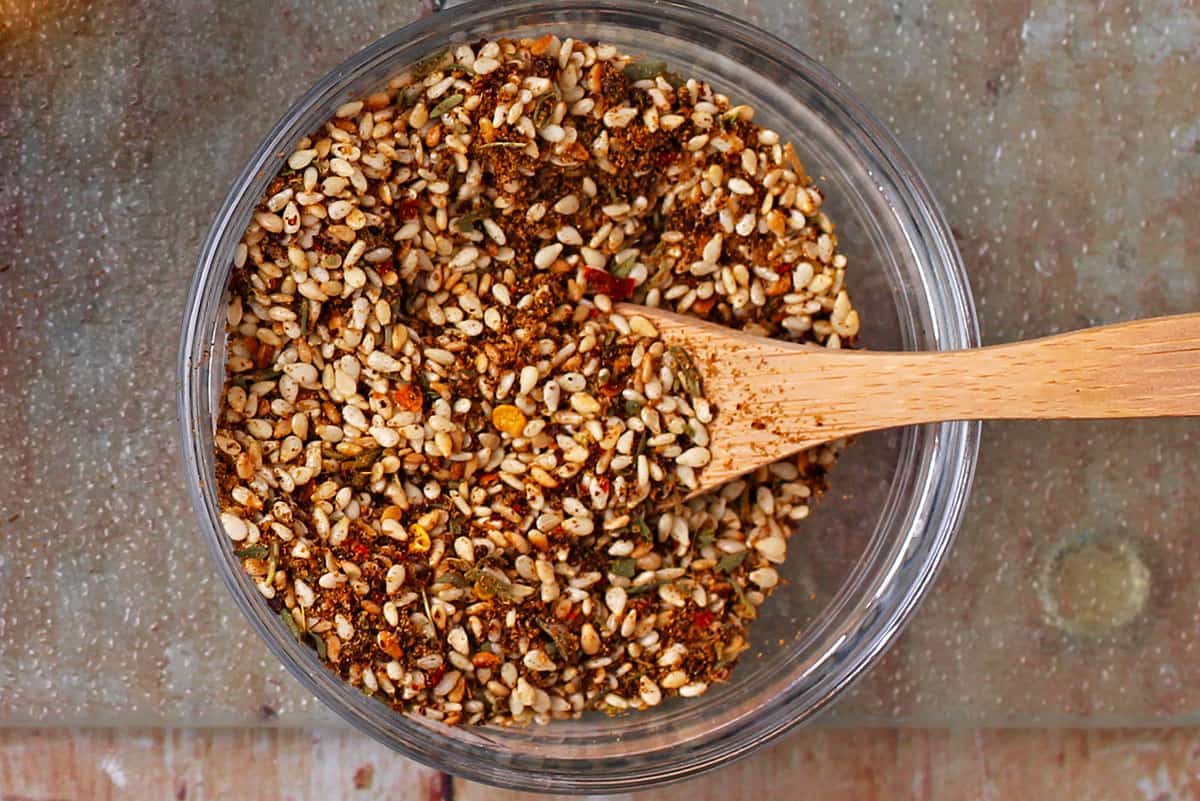
Step 1: Make zaatar in a small bowl.

Step 2: Add the prepped veggies, pomegranate, mint, and basil to a medium salad bowl.

Step 3: Sprinkle zaatar over the salad.

Step 4: Add lemon juice and toss.
Pro Tips
I prefer cutting the red onion and pepper into thin slices for more texture and a prettier presentation. Another option is to dice all the veggies, including the tomatoes, for a festive pomegranate salsa to set off the holiday table.
Denise's pomegranate tip. The best way I've found to dig out pomegranate seeds is to cut your pomegranate into quarters first. Place a colander in the sink to reduce splatter. Fold the quarters over to release the seeds.
Serving Suggestions

I love this zesty salad with everything from Seitan roast mushroom cranberry stuffing to Mediterranean chickpea sweet potato burgers to black bean koftas with garlic aioli. It pares well with maple-glazed roasted sweet potatoes and Instant Pot vegetable curry rice.
Frequently Asked Questions
Store pomegranate salad in an airtight container in the refrigerator for 3 days. Toss it before reserving.
There are a number of ingredients you can add to this delicious salad. Vegan feta cheese or leafy greens such as baby arugula or baby spinach are good options. I've also added sliced grapes for a touch of sweetness.
To make a simple pomegranate dressing for this salad, combine pomegranate juice or molasses with lemon juice and a teaspoon of maple syrup or another liquid sweetener.
Vegan Recipes with Pomegranate
Hungry for more? Subscribe to my newsletter and follow me on Facebook, Pinterest, and Instagram for all the newest recipes!
👩🏻🍳 Recipe

Zesty Pomegranate Salad Recipe with Tomatoes and Zaatar
Rate this Recipe:
Ingredients
- 1 cup pomegranate seeds - 1 fresh pomegranate
- 4 cups cherry tomatoes - cut in half, 2 pints
- 1 medium bell pepper - red, yellow, orange, thinly sliced
- 1 small red onion - cut in half and thinly sliced into half-moons
- ⅓ cup basil leaves - chopped or torn into small pieces
- ⅓ cup mint leaves - chopped or torn into small pieces
- 2 teaspoon zaatar - see recipe below
- 2 tablespoons lemon juice
- ¼ teaspoon sea salt - optional
Zaatar spice blend
- 1 teaspoon sesame seeds
- 1 teaspoon ground cumin
- 1 teaspoon sumac
- 1 teaspoon ground coriander
- 1 teaspoon dried thyme
- ½ teaspoon chili flakes
Instructions
- Mix the sesame seeds, cumin, sumac, coriander, thyme, and chili flakes in a small bowl.
- Combine the pomegranate seeds, tomatoes, yellow pepper, and red onion in a medium bowl.
- Add the basil and mint and mix everything well.
- Add the zaatar and lemon juice. Mix everything and taste. Add a bit of salt if desired.
- You can serve this salad immediately or put in the refrigerator and serve it later.
Notes
- Although this recipe includes homemade zaatar seasoning, you can find it in large supermarkets or shops with Middle Eastern foods.
- Make this salad several hours ahead and let the flavor merge while you prepare other dishes. A great strategy for holiday meals!
- Store pomegranate salad in an airtight container in the refrigerator for 3 days. Toss it before reserving.
Nutrition
Nutritional information is an estimation only.



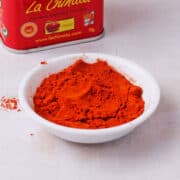

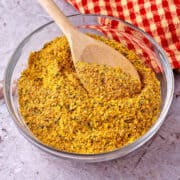







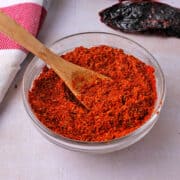
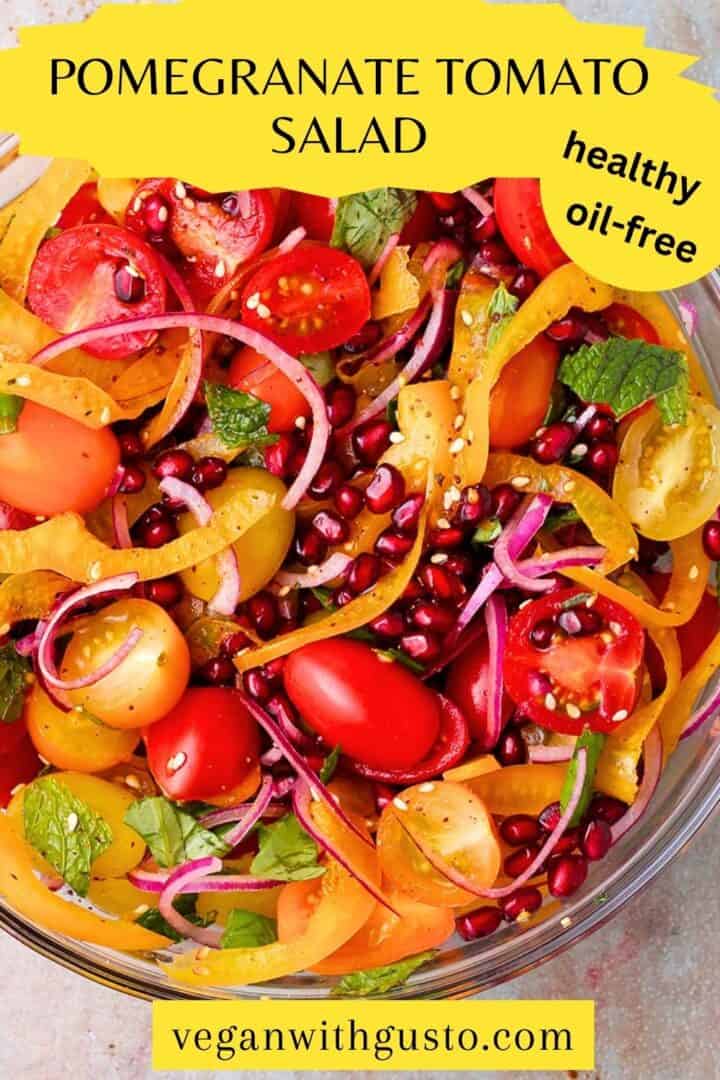
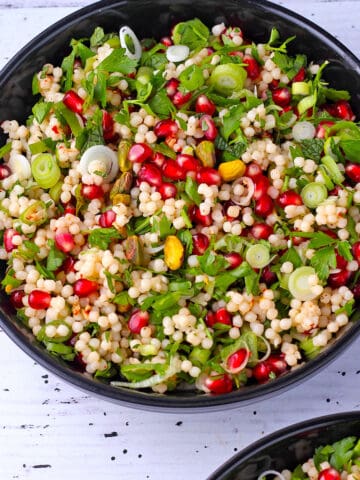
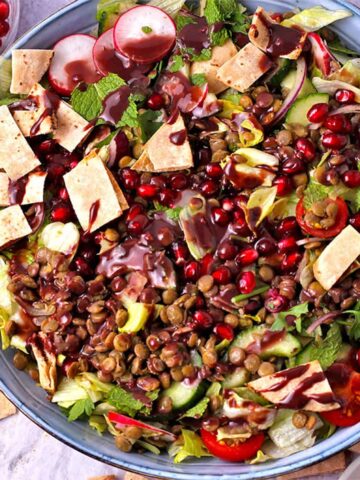
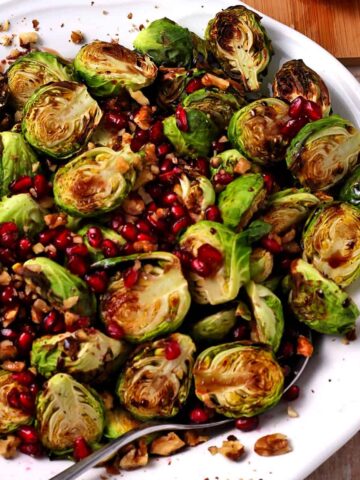
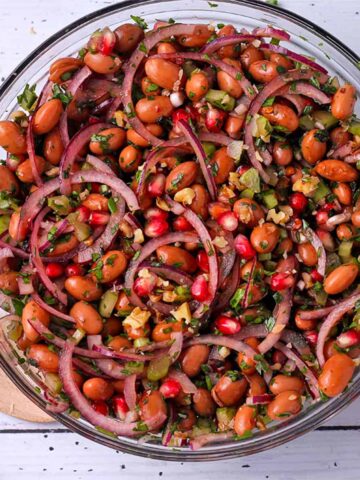
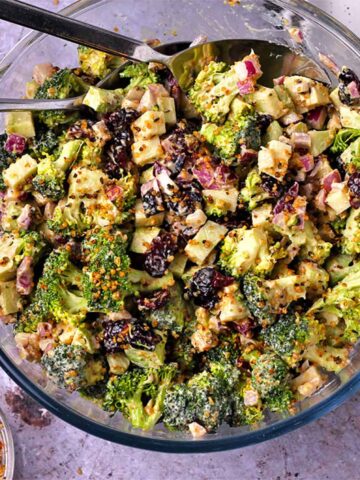
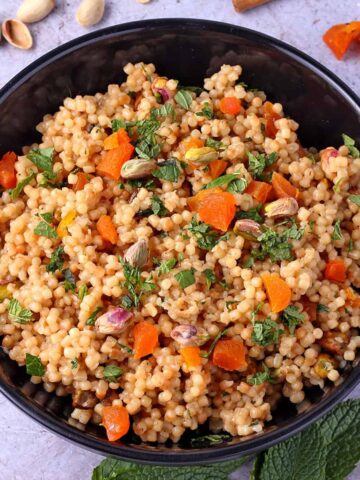
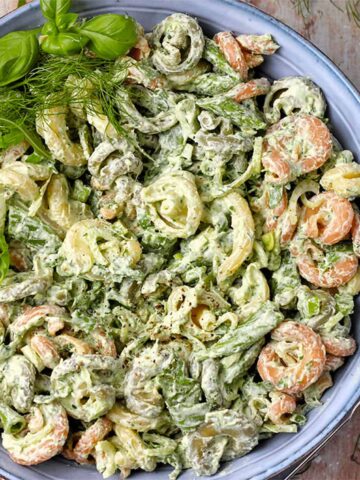
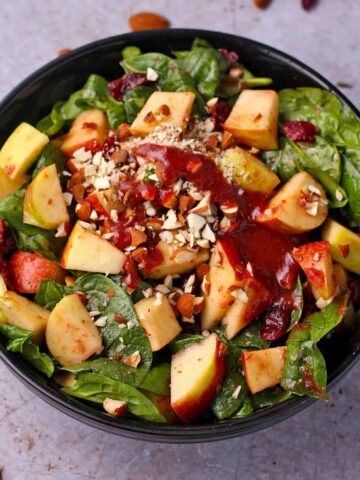


Leave a Reply